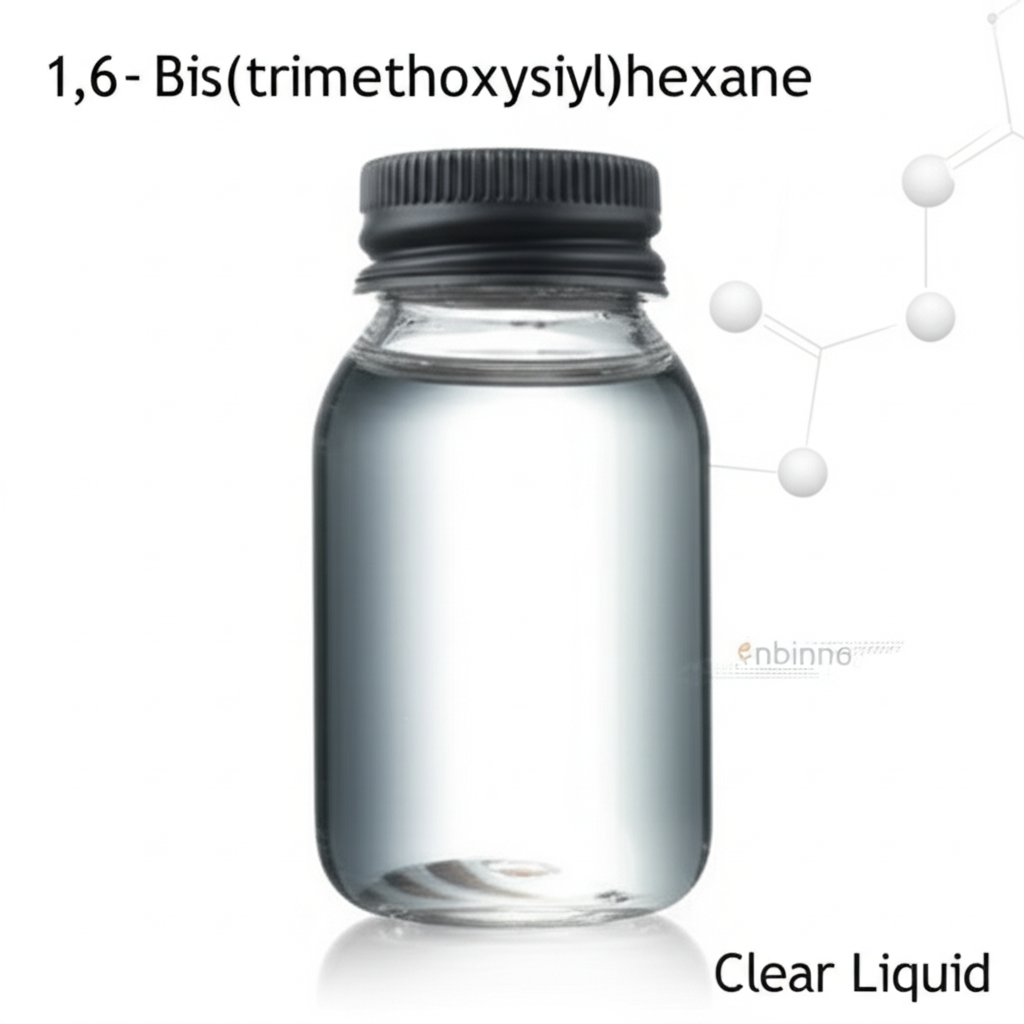1,6-Bis(trimethoxysilyl)hexane: Enhancing Adhesion and Flexibility in Advanced Materials
Discover the power of 1,6-Bis(trimethoxysilyl)hexane for superior bonding and material performance.
Get a Quote & SampleProduct Core Value

1,6-Bis(trimethoxysilyl)hexane
This specialty silane coupling agent features a hexane-bridged dipodal structure. The two trialkoxysilyl groups facilitate 3D crosslinking, leading to reduced shrinkage and improved flexibility, while minimizing internal stress. Its unique chemical properties make it an essential component for enhancing adhesion between organic and inorganic materials across various industries.
- Leverage the benefits of 3D crosslinking with reduced shrinkage offered by 1,6-Bis(trimethoxysilyl)hexane for your polymer applications.
- Enhance material compatibility and minimize internal stress by utilizing the long C6 spacer chain inherent in this dipodal silane structure.
- Explore its role as an adhesion promoter for industrial adhesives, ensuring robust bonds in demanding environments.
- Discover how this silane can be used for organic-inorganic hybrid materials, opening new avenues in material science.
Advantages Offered by the Product
Superior Adhesion Promotion
Significantly improve the bonding strength between dissimilar materials, a critical factor when using silane coupling agents for adhesion.
Enhanced Material Flexibility
The hexane-bridged structure contributes to increased flexibility, making it ideal for applications where material resilience is key, as seen in advanced polymer modifiers.
Reduced Shrinkage and Stress
Its capability for 3D crosslinking helps minimize shrinkage and internal stress, leading to more stable and durable final products.
Key Applications
Coatings
As a crosslinking agent in various coating formulations, it provides excellent scratch resistance and improved gloss, crucial for high-performance coatings chemistry.
Adhesives
Acts as a vital adhesion promoter for industrial adhesives, enhancing durability and performance, especially in challenging bonding scenarios.
Composite Materials
Facilitates strong bonding between inorganic fillers and organic matrices in composite materials, improving their mechanical properties.
Surface Modification
Utilized for surface functionalization technologies, making surfaces more compatible with specific applications and improving their properties.
Related Technical Articles & Resources
Why Choose Us?
Leverage our expertise and state-of-the-art infrastructure to accelerate your journey from discovery to commercial success.
Global Experience
With 20 years of R&D, manufacturing, and sales experience, we proudly serve clients across 60 countries and regions worldwide.
Advanced Facilities
Our in-house R&D laboratory, pilot platform, and large-scale production workshop are equipped to meet the audit requirements of global customers.
Seamless Scalability
We facilitate a perfect transition from small-scale lab requirements (grams) to full commercialization (hundreds of tons).
